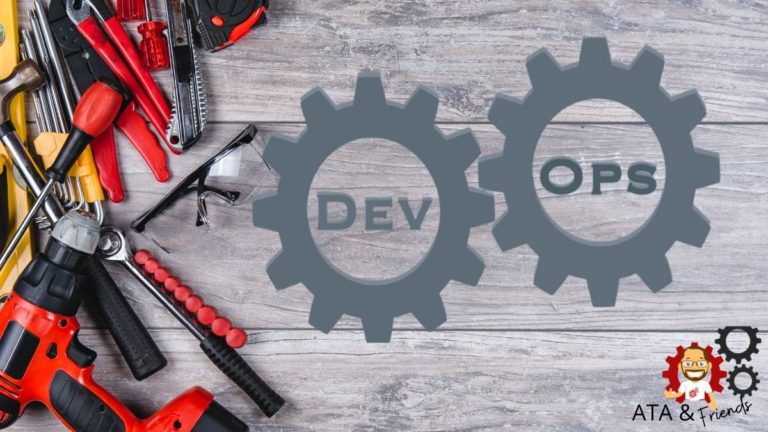DevOps is all the rage these days. Buzzwords like Continuous Integration (CI) and Continuous Delivery (CD) get thrown around all the time. How do you ‘do’ the DevOps automation and implement CI and CD? DevOps tools.
DevOps tools can be categorized in many different ways and that is what this article will set out to show. In this article, you’re going to learn a brief background on DevOps automation and you’ll then learn many of the most popular DevOps tools that will help you and your organization succeed!
Let’s get started!
Continuous Integration —> Delivery —> Deployment
To understand DevOps tools, you must first understand the concept of continually delivering value to customers. Delivering a solution to customers typically requires three different phases. Organizations must build the code when new code is pushed to a source control repository. It must then be prepared to deploy to an environment (deliver) and finally deployed to the environment for users to consume.
When you perform each of these phases in an automated fashion, you’re continuously performing each action. In DevOps-speak, you get:
While writing code collaboratively, software developers must merge changes and updates frequently into the main codebase depending on the version control tool used. When a developer checks in code to the repository, an action is automatically triggered called CI.
In CI, developers push small code changes into a shared codebase with automated testing to validate changes.
CI aims to build an automated approach to developing, packaging, and testing software while maintaining a stable development environment.
Once developers have committed code to a shared codebase, the system must prepare that code sometimes called packaging to deliver to an environment also called
Continuous Delivery. Continuous Delivery allows organizations to maintain a ready to deploy codebase where at any moment, the DevOps team can deploy software to the production environment.
To finish off a build/release process, that built software must be deployed to a production environment called Continuous Deployment. Continuous Deployment is the last mile in the delivery process that automates deploying software to a production environment.
Build/Release Pipeline DevOps Tools for DevOps Automation
A DevOps cornerstone is automation. DevOps is a critical component to delivering value to customers faster. As such, it’s important to have an automation tool that allows organizations to perform all tasks associated with software delivery.
In a typical software delivery process, organizations must compile code or, at a minimum, run a few tasks to prepare the code for delivery. They must build the code. Once you’ve built the code, you must deploy the code into one or more environments or release it.
Build/release tools are a common category of tools in the DevOps space and embody DevOps’ ‘ continuous’ mentality.
Azure DevOps
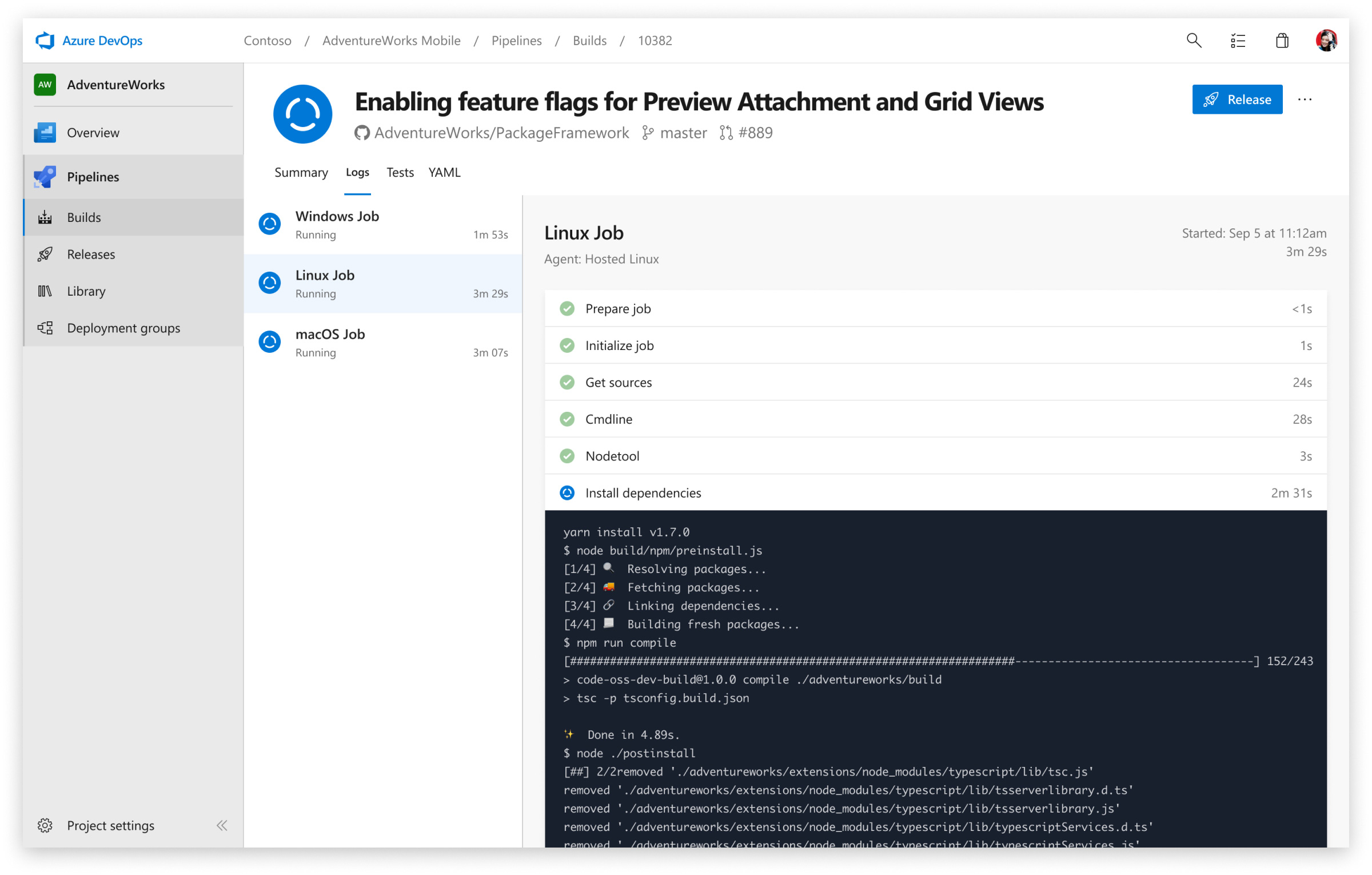
Starting off the DevOps tools list, let’s first check out the Microsoft service, Azure DevOps, more specifically, Azure Pipelines.
Azure DevOps is a Software as a Service (SaaS) tool that enables collaboration on code, build/release practices, and effective work-tracking to deliver quality software products. For CI/CD, Azure Pipelines is the Azure DevOps feature of choice.
Features
- Integrating well with any ecosystem.
Azure Pipelines build agents run on all major platforms (Linux, macOS, Windows) and support several development languages giving developers the liberty and freedom to work with any language.
- Supporting cloud and container services.
Azure Pipelines also natively supports all cloud environments like AWS and Google Cloud, not just Azure. You can find native tasks to also work with Kubernetes services like Azure Kubernetes Services (AKS).
- Robust monitoring and reporting services such as dashboards and charts.
Octopus Deploy

Unlike Azure DevOps, which supports all phases of the software development lifecycle, Octopus Deploy focuses on deployment. Octopus Deploy is a Continuous Deployment tool responsible for release management and automated deployments.
Using Octopus Deploy, DevOps engineers can create development, staging, and production environments with all the permissions and rights to deploy in each stage. In addition, it’s a handy tool for automatically initiating a release process deploying packages to test and production environments.
Features
- Supporting all cloud development platforms.
- Supporting on-premises development through tools with their smart agent called Tentacle.
- Supporting .NET developers as first-class citizens.
- Integrating well with other tools like Jenkins and Azure DevOps.
Jenkins

Wrapping up the build/release tools, you can’t forget Jenkins. Jenkins has been around for a long time as an automation tool built primarily for Continuous Integration. Using Jenkins, organizations can integrate with other Continuous Delivery tools to provide seamless software product delivery.
Jenkins has an extensive ecosystem of plugins allowing developers to facilitate automated builds, tests, and releases.
Features
- Being open-source software with rich community support.
- Being free! You can do just about anything using Jenkins without paying anything.
- Providing an extensible architecture through a set of plugins.
Build/Release Tool Comparison
| Name | Open Source | Hosting Option | Programming Language Support | Container Support | Extensibility |
| Azure Pipelines | No | On-prem or hosted in Azure | Python, Ruby, .NET, Java, C#, JavaScript, PHP | Kubernetes, Azure Container Registry, DockerHub | Integrates well with other software tools. i.e. Slack, SonarCloud |
| Octopus Deploy | No | Octopus Cloud or on-prem | ASP .NET, Java, Node.js, Ruby, PHP | Kubernetes | Integrates well with other CI/CD tools such as Jenkins |
| Jenkins | Yes | Cloud or On-prem | Python, Ruby, .NET, Java, Go, JavaScript | Docker | Integrates easily with many tools and plugins. i.e. Jira, Slack |
Configuration Management DevOps Tools
Managing the configuration on infrastructure like VMs, storage, networking, etc can soon become a problem. But with configuration management tools, you can automate just about every facet of ensuring your infrastructure is configured correctly.
In a DevOps automation world, three of the most popular configuration management tools include Ansible, Puppet, and Chef.
Ansible
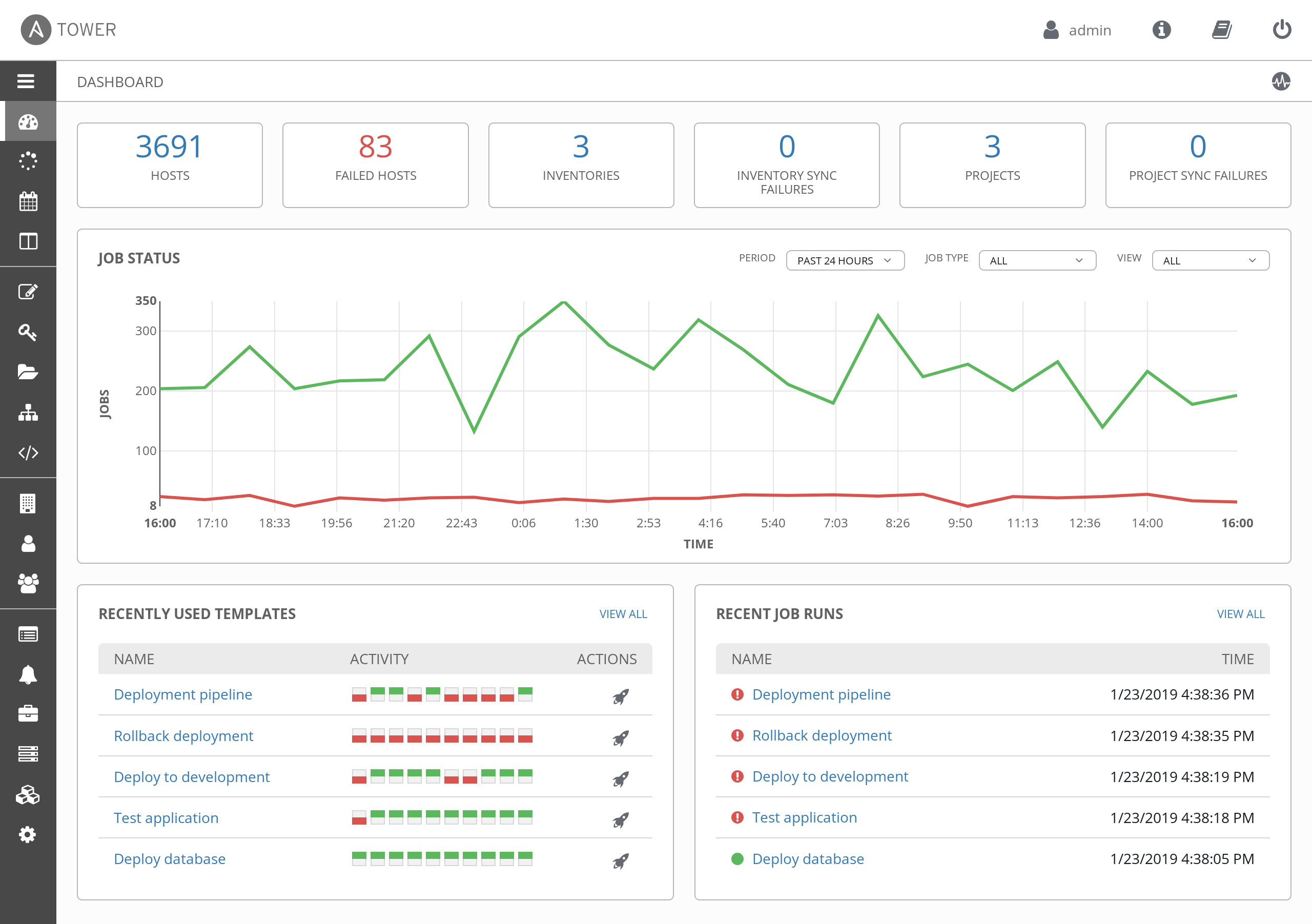
Being one of the most popular configuration management platforms out there, Ansible automates just about every facet of your required infrastructure. Ansible can deploy applications, manage file changes, provision cloud resources, and a whole lot more.
Ansible automates with playbooks. Playbooks are YAML files that define the state that your infrastructure should be in. These playbooks are then read, and instructions are sent to remote nodes to fulfill the expected state.
Features
- Through Ansible Tower, Ansible has a dashboard for visualizing tasks running in Ansible.
- Through Ansible Tower, Ansible relies on role-based access control (RBAC) to easily scope out various user permissions and define environments they are allowed to interact with.
- Supports on-premises and cloud infrastructure configuration provisioning.
Puppet

Puppet is another popular configuration management platform for infrastructure and configuration management. Puppet manages configurations based on Puppet modules that a Puppet manifest file then calls upon to define tasks to carry out.
Using a product called Puppet Remediate, teams can discover and eliminate security risks in an infrastructure environment.
Features
- Puppet supports all operating systems and cloud technologies.
- Puppet allows users to create their own custom functions to extend module functionality.
- Puppet support container technologies such as Kubernetes and Docker.
Chef

Chef is a DevOps tool that sets out to transform your infrastructure into code for continuous automation. Chef’s approach to infrastructure management is based on agents like Chef Infra to automate infrastructure configuration.
Chef can automate just about anything by defining the required configurations as scalable and tested code, whether you’re working with cloud or physical infrastructure.
Chef requires DevOps teams to define recipes that dictate the various tasks to carry out. Recipes contain a description of resources and software packages that are needed to automate and manage infrastructure as code.
Features
- Agent-based automation platform that carries out instructions defined in recipes.
- Supports all operating systems, multi-cloud, and even hybrid environments.
- Chef has a Chef analytics feature for monitoring changes occurring in the Chef server.
Configuration Management Tools Comparison
| Name | Open Source | Language of Development | Hosting option |
| Ansible | Yes | Python | Cloud or on-prem |
| Puppet | Yes | Ruby | Cloud or on-prem |
| Chef | Yes | Ruby | Cloud or on-prem |
Test Automation DevOps Tools
Once developers have created the code, it must be rigorously tested. In DevOps, organizations must test code and the changes that the code makes in a continuous testing manner. Continuous testing is essential for identifying bugs and unexpected changes that result from a software release.
Three common test DevOps automation tools are Selenium, Worksoft and Kobiton.
Selenium

Selenium is an open-source tool for test automation in web applications. Selenium supports test automation on a wide range of browsers. Selenium allows testers to mock user interactions with web applications and record the findings for remediation.
Through products like Selenium WebDriver, Selenium IDE, Selenium Grid, and other add-ons, Selenium provides an ecosystem of technologies to help build and execute web tests.
Testers can create the Selenium scripts in Java, Python, Ruby, C#, JavaScript, PHP, and Perl.
Selenium also has a plugin ecosystem that extends its functionality to give testers more options for writing and executing tests.
Features
- Ecosystem of plugins to extend functionality
- Support for writing tests in many languages
- Supports for executing scripts on remote computers with Selenium Grid
Worksoft

Worksoft is another test automation DevOps tool that provides a codeless continuous test automation platform. Worksoft tests every workflow, both pre and post-production environments, to guarantee end-to-end application quality.
Worksoft supports automated unit testing, regression testing, functional and performance testing for enterprise applications, interfaces, systems, and technologies.
Features
- Does not require coding skills. Worksoft is a codeless platform.
- Integrates with other DevOps tools through Worksoft Certify.
- Supports enterprise systems such as SAP and also mobile applications.
- Has a simple UI to support even non-technical business users’ test cases.
Kobiton
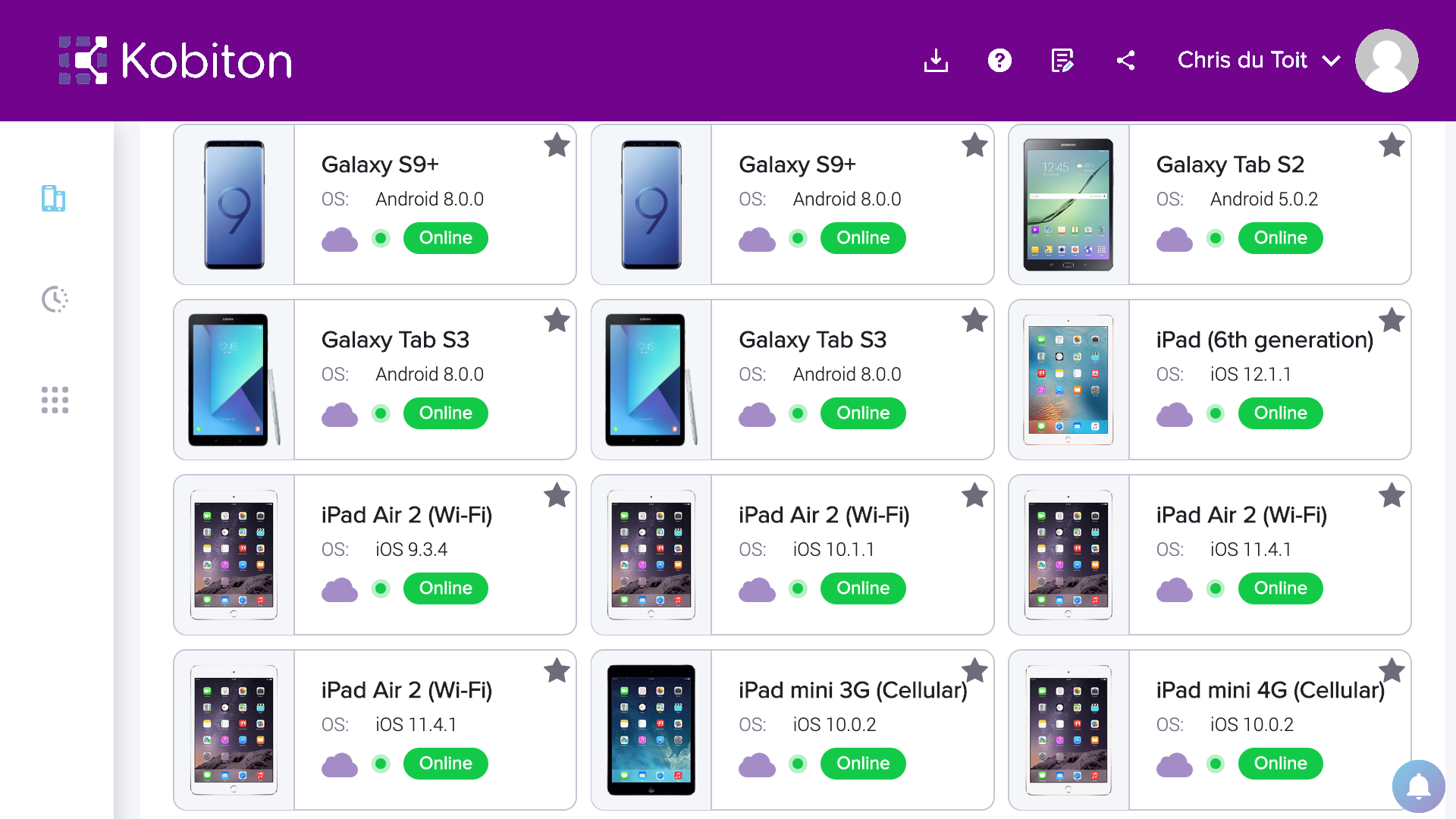
Kobiton is a continuous test automation tool for mobile applications. Kobiton allows you to create functional, visual, and performance tests for your applications. With Kobiton, tests are run on physical devices instead of emulators.
Through regression tests in Kobiton, DevOps teams can accelerate mobile applications release time while still maintaining the quality of the software applications.
Features
- Supports Android and iOS application testing on real devices.
- Leverages NOVA AI engine, an AI testing framework that makes it a script-less test automation platform for intelligent and fast tests.
- Supports local and cloud mobile testing through Kobiton Device Lab Management software.
Test Automation Tool Comparison
| Name | Open Source | Test Targets |
| Selenium | Yes | Web-based |
| Worksoft | No | Enterprise applications, web-based, and mobile |
| Kobiton | No | Mobile Devices |
Monitoring DevOps Tools
Monitoring tools in DevOps ensure infrastructure health, application performance, user activities, and potential system vulnerabilities through logs and other performance metrics
Some of the most popular DevOps tools for monitoring are Nagios, Elastic Stack, and Splunk.
Nagios
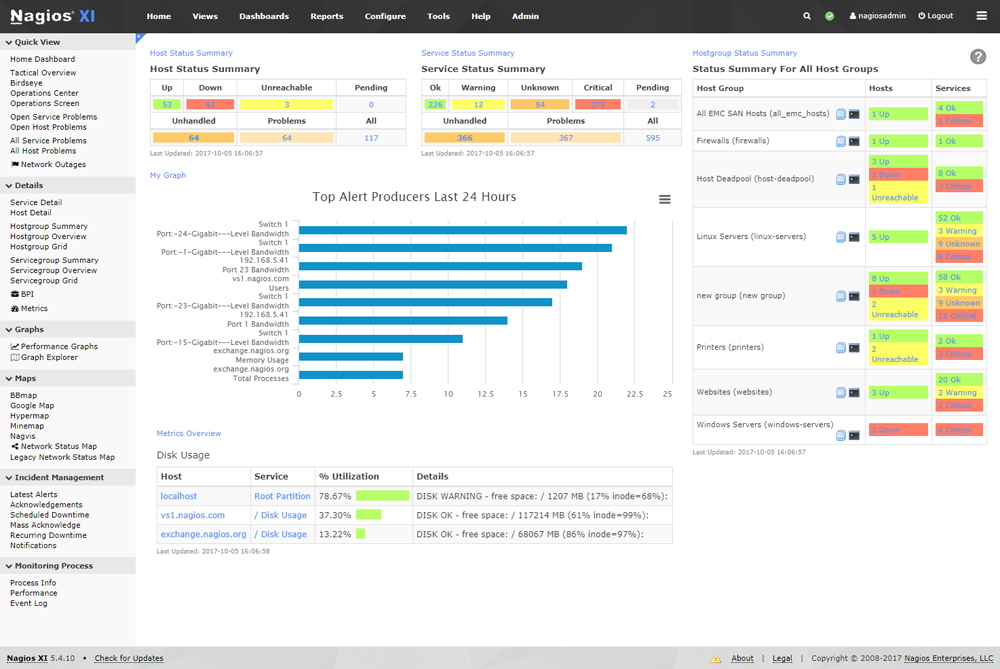
When it comes to infrastructure monitoring in a DevOps culture, many organizations turn to Nagios. Nagios is an open-source tool that monitors infrastructure components such as running applications, system metrics, network status, and log data.
Nagios’ ecosystems of components include Nagios XI, Nagios Log Server, and Nagios Fusion. These tools all work in tandem to cover all facets of monitoring.
Nagios manages application and system log data through the Nagios Log Server. This product provides DevOps teams with critical information about the state of infrastructures based on analysis of the log files such as network traffic, server load, and more.
To visualize monitoring data, Nagios uses Nagios Fusion to create useful visualizations of the state of the environment DevOps Engineers can inspect.
Features
- An extendable platform that allows integrations with other third-party applications and add-ons that extends functionality.
- Detailed web interface with Nagios Fusion for visibility and awareness of the infrastructure status.
- Long-time track record of being a monitoring tool of choice.
The ELK Stack
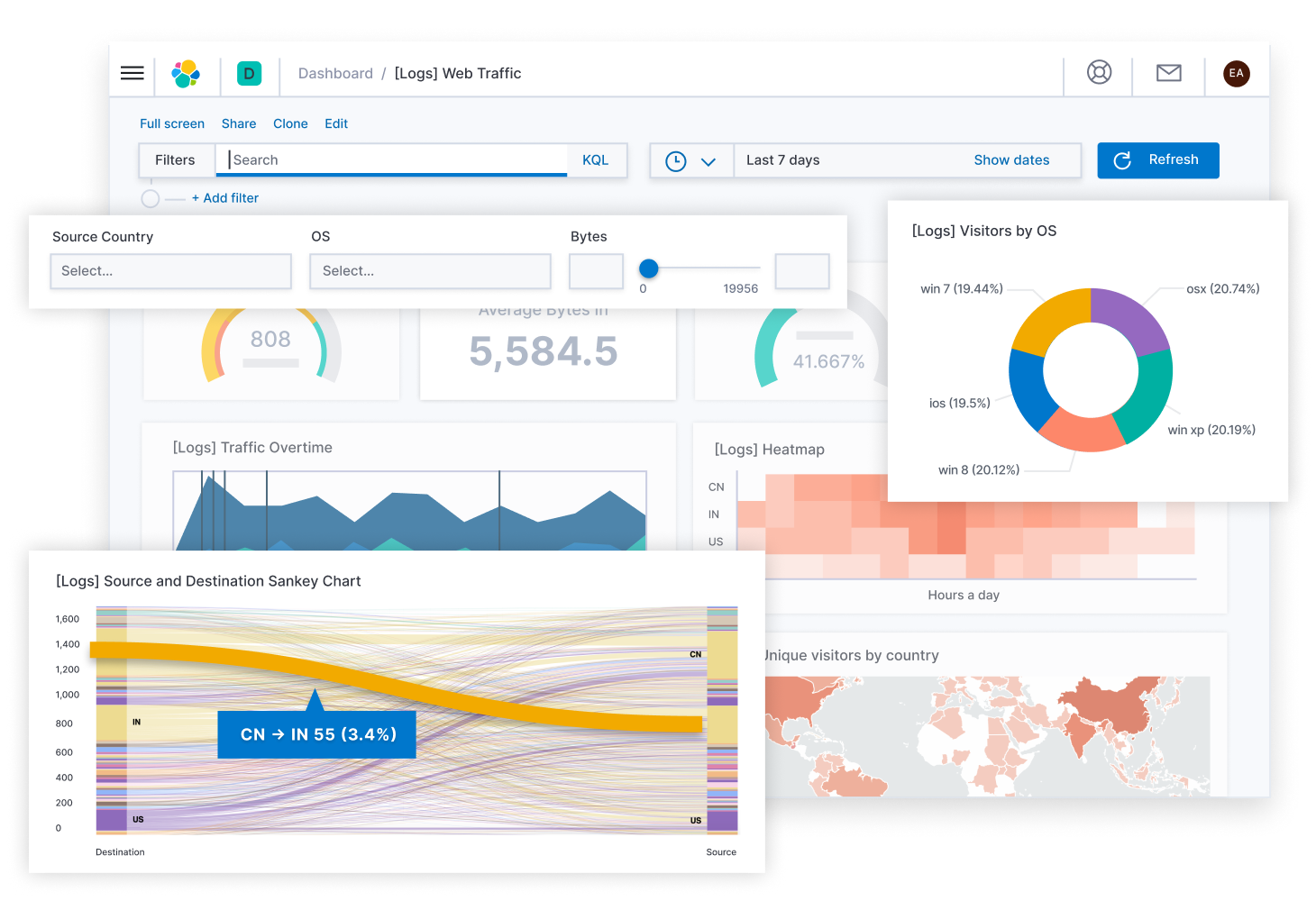
The ELK stack is made up of three open-source projects- Elasticsearch, Logstash, and Kibana. This software suite can collect, transform, and visualize log data in a DevOps environment.
Logstash collects log information and sends that data to Elasticsearch, which then uses Kibana to visualize the data for investigation.
Through Kibana, teams can build beautiful visualizations for a better understanding of running applications and systems.
Features
- Supports for multi-stack monitoring, allowing you to monitor all infrastructure deployments in one place.
- Supports snapshot and restore capability to ensure continuity of service.
- Supports audit-logging to monitor infrastructure changes.
Splunk

Splunk not only supports infrastructure and application monitoring but also serves as a unified security operations platform. As a result, Splunk is ideal for all IT and DevOps operations because it can be used to monitor and troubleshoot an entire environment in one platform, whether on-premises, hybrid or multi-cloud.
Splunk offers DevOps teams real-time visibility of their application environments while routing alerts on incidents to qualified responders, therefore reducing the time required for troubleshooting activities.
Features
- Customized dashboards for metrics visualizations.
- AI and machine learning to help capture incidents before they occur or cause service downtime provided by predictive analytics.
- Splunk Cloud Platform to support cloud monitoring.
- Supports key technologies such as Amazon CloudWatch, Google Cloud Platform, Kubernetes and Microsoft Azure.
Monitoring Tool Comparisons
| Name | Open Source | Support for Visualizations |
| Nagios | No | Yes |
| ELK Stack | Yes | Yes |
| Splunk | No | Yes |
Conclusion
There are many tools to choose from in the DevOps automation ecosystem. Organizations and companies provide a huge range of various tools to ensure developers ship quality applications to customers.
Since developers have no shortage of tools, the big decision isn’t about lack of tools, it’s about choosing the right tool for you. That’s the hard part. Unfortunately, this article can’t help with that.
Picking a DevOps tool is all about your organization’s goals and strategy. But, now that you have an overview of many of the popular tools out there, you have a leg up on your tool decision journey!
